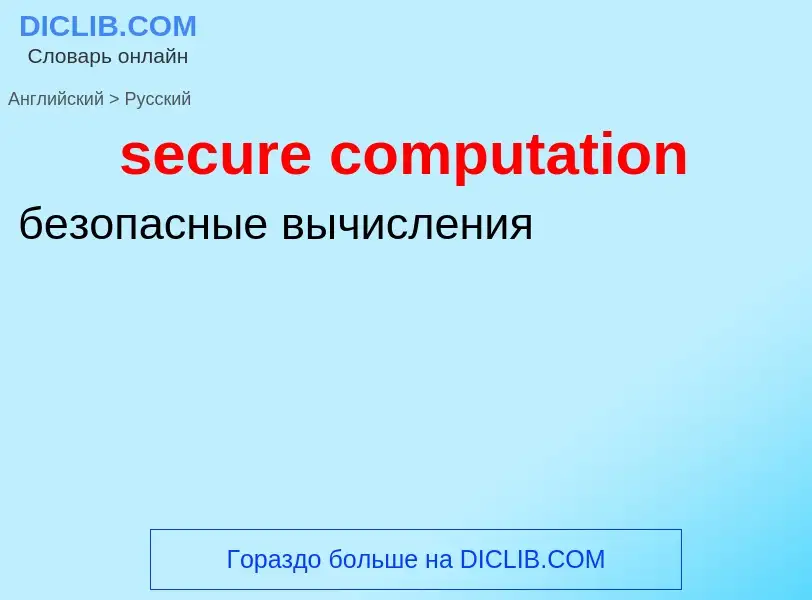Translation and analysis of words by ChatGPT artificial intelligence
On this page you can get a detailed analysis of a word or phrase, produced by the best artificial intelligence technology to date:
- how the word is used
- frequency of use
- it is used more often in oral or written speech
- word translation options
- usage examples (several phrases with translation)
- etymology
secure computation - translation to russian
Смотрите также
общая лексика
Security Hypertext Transfer Protocol
протокол защищенной пересылки гипертекста, протокол S-HTTP
спецификация защиты данных, разработанная фирмой Enterprise Integration Technology (EIT)
Смотрите также
Definition
Wikipedia
Secure multi-party computation (also known as secure computation, multi-party computation (MPC) or privacy-preserving computation) is a subfield of cryptography with the goal of creating methods for parties to jointly compute a function over their inputs while keeping those inputs private. Unlike traditional cryptographic tasks, where cryptography assures security and integrity of communication or storage and the adversary is outside the system of participants (an eavesdropper on the sender and receiver), the cryptography in this model protects participants' privacy from each other.
The foundation for secure multi-party computation started in the late 1970s with the work on mental poker, cryptographic work that simulates game playing/computational tasks over distances without requiring a trusted third party. Traditionally, cryptography was about concealing content, while this new type of computation and protocol is about concealing partial information about data while computing with the data from many sources, and correctly producing outputs. By the late 1980s, Michael Ben-Or, Shafi Goldwasser and Avi Wigderson, and independently David Chaum, Claude Crépeau, and Ivan Damgård, had published papers showing "how to securely compute any function in the secure channels setting".

